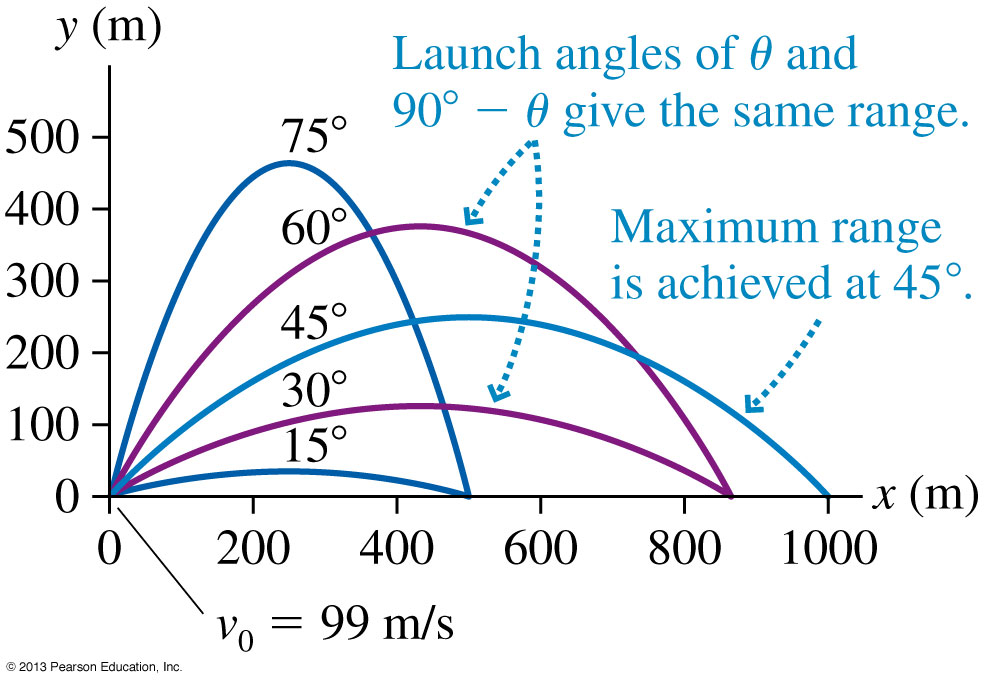Eric Murray, Spring 2006
Question these experiments will enable you to answer: How does the speed of a horizontally launched projectile affect its time of flight? How does the angle at which a projectile is launched affect the distance to its landing point?
Features: A projectile (16 mm steel ball) is launched from a spring gun. Three different launch speeds are available, depending on how far the spring is compressed before launch. Automated measurements of launch speed and time of flight are made with devices that are interfaced to a computer. The vertical and horizontal distances the ball travels are measured manually.
Preliminaries: Make sure the sensors are plugged into the interface in the order the projectile encounters them. That is, the first photogate should be plugged into channel 1, the second photogate should be plugged into channel 2, the time-of-flight pad should be plugged into channel 3. Open the data template. You'll find displays for the launch velocity and time of flight. The sensors have been set to record one set of measurements automatically after Record
has been clicked.
The only calibration, 0.10 m between the photogates, should already be set.
Measure and record the vertical travel distance, which will be the same for all experiments.
Experiment 1—Horizontal Launch, Low Speed: Set the launcher to an angle of 0°. Push the steel ball into the launcher with the ramrod
until the launcher clicks once. One partner should launch the ball by pulling up on the lanyard. The other should watch to see where the ball lands, and then recover it. The box containing the time-of-flight pad should then be placed approximately where the ball landed. Reload the launcher, click Start
, and launch the ball. One partner should watch to see where the ball landed on the time-of-flight pad. The tape measure and plumb bob should be used determine the horizontal distance of travel. It should be recorded, along with the displayed launch speed and time of flight. The horizontal distance measurement, in particular, lacks precision, so ten launches should be made, and the average, standard error, and standard deviation of the launch speed, time of flight, and horizontal travel distance calculated. Calculate the expected time of flight. Calculate the expected horizontal travel distance two ways: once using the average measured time of flight, and once using the vertical distance travelled.
Experiment 2—Horizontal Launch, Medium Speed: Repeat Experiment 1, but push the steel ball into the launcher with the ramrod
until the launcher clicks twice.
Experiment 3—30° Launch, Low Speed: Repeat Experiment 1, but with the launcher set to an angle of 30° above the horizontal.
Experiment 4—60° Launch, Low Speed: Repeat Experiment 1, but with the launcher set to an angle of 60° above the horizontal.
Summary: Review your worksheet. Think about the goals of these experiments, your results, and the expectations from theory while writing your discussion.

Figure 4.16 from your text